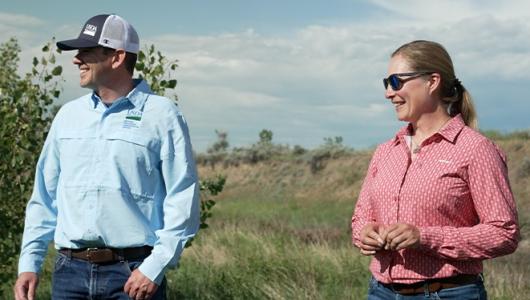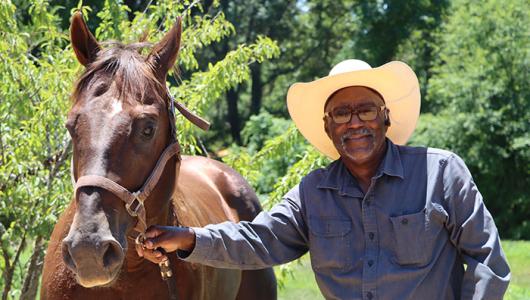From the kitchen table to the boardroom table, USDA brings people together across the nation for: healthier food, natural resources and people; a stronger agricultural industry; and economic growth, jobs and innovation. Each Friday, meet those farmers, producers and landowners through our #FridaysOnTheFarm stories. Visit local farms, ranches, forests and resource areas where USDA customers and partners do right and feed everyone.
This Friday, meet LeRoy and Marlene Buchholz, a couple who decided to turn their farming operation near Creighton, Nebraska into a wildlife oasis. Located among abundant corn and soybean fields, the farm provides healthy habitat for the broader landscape.
Read the interactive, multi-media version of this #FridaysOnTheFarm story.
Creating a Refuge
LeRoy and Marlene once raised cattle for beef and dairy, hogs, sheep, and crops as part of their farming operation.
As the two approached retirement age and began renting out their cropland, they knew they wanted to create a refuge for wildlife near their home – a place they have farmed together since 1959 and where Marlene has lived her entire life.
About 17 years ago, the Buchholzes turned to the folks at their USDA Service Center to enroll part of their farm in the Conservation Reserve Program, a program offered by the USDA Farm Service Agency.
Through the program, farmers voluntarily enroll and agree to remove environmentally sensitive land from agricultural production and plant species that will improve environmental health and quality. In return, the Farm Service Agency provides participants with rental payments and cost-share assistance to establish planned conservation practices.
LeRoy and Marlene currently have active conservation practices including filter strips, trees, warm-season grasses, and pollinator habitat. They also enrolled some of their land in State Acres for Wildlife Enhancement, a part of the Conservation Reserve Program that specifically focuses on improving wildlife habitat.
Welcoming Wildlife
LeRoy says the practices are working. The acres are flush with deer, pheasants, greater prairie chicken, turkeys, butterflies, and bees.
LeRoy prides himself on managing the acres, keeping a close eye on unwanted thistles and small elm trees that could take over without regular attention. He’s been known to create brush piles for quail habitat and to delay a controlled burn because a goose was nesting.
“It’s funny how it works. When we burned a patch, it was early in the spring. I came out at midnight to check things out, and the prairie chickens didn’t know where to go. But, they all came back when the CRP came back,” he said.
LeRoy and Marlene said they have received great assistance from USDA’s Farm Service Agency and Natural Resources Conservation Service, as well as other local partners like the Nebraska Game and Parks and local Pheasants Forever chapter.
“Each year they thoughtfully plan habitat management and improvement projects, working diligently to keep invasive tree and weed species controlled, and ensure that plant composition remains diverse,” Rebekah Jessen, Natural Resources Conservation Service Soil Conservationist said. “They pride themselves on the assorted habitat they have created.”
More Information
USDA offers a variety of risk management, disaster assistance, loan, and conservation programs to help agricultural producers in the United States weather ups and downs in the market and natural disasters as well as invest in improvements to their operations. Learn about additional programs.
For more information about USDA programs and services, contact your local USDA service center.
Join the Conversation
Follow the #FridaysOnTheFarm story series and other news you can use on farmers.gov and @Farmersgov on Twitter.


